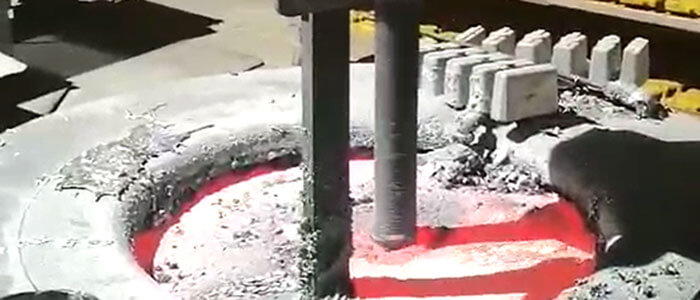Graphite rotors are typically crafted from high-purity graphite materials due to graphite’s excellent high-temperature resistance and chemical stability, enabling them to work in aluminum melts without corroding. This characteristic makes graphite rotors an ideal choice for aluminum refining processes. The graphite rotor serves as a stirrer, facilitating the mixing of alumina and other raw materials to undergo melting and metal separation processes. This stirring action is essential for enhancing the purity and quality of aluminum.
In essence, graphite rotors play a vital role in aluminum refining, aiding in the production of high-quality aluminum products. Understanding how to use graphite rotors properly is essential for optimizing the refining process and ensuring efficient aluminum production.
How to Use Graphite Rotors
Selection and Sizing:
1. Application-specific Considerations:
Before incorporating graphite rotors into a process, it is essential to thoroughly understand the application requirements. Different industries, such as metallurgy, chemical manufacturing, and pharmaceuticals, have distinct needs. Consider factors such as the type of materials being processed, the required mixing precision, and the operating temperatures.
2. Size and Capacity Matching:
Graphite rotors come in various sizes and capacities. It is crucial to match the rotor’s size to the volume and characteristics of the materials being processed. Oversized or undersized rotors may lead to inefficient mixing, reduced performance, or even structural issues during operation.
Installation and Maintenance:
1. Proper Installation Procedures:
Correct installation is paramount for the optimal functioning of graphite rotors. Follow manufacturer guidelines and ensure that the rotor is securely attached to the equipment. Proper alignment is crucial to prevent undue stress on the rotor during operation.
2. Regular Inspection and Maintenance:
Implement a routine inspection and maintenance schedule to ensure the longevity of graphite rotors. Check for signs of wear, corrosion, or any damage that may compromise their performance. Promptly address any issues through maintenance or replacement to prevent potential disruptions in the industrial process.
Operating Conditions:
1. Temperature Considerations:
Graphite rotors excel in high-temperature environments, but it is essential to operate within their specified temperature range. Exceeding these limits may lead to performance degradation or structural damage. Conversely, operating at lower temperatures than required may compromise the efficiency of certain processes.
2. Chemical Compatibility:
Verify the chemical compatibility of graphite rotors with the substances they will come into contact with during the industrial process. Graphite is generally resistant to corrosion, but certain aggressive chemicals may still affect its performance. Choose the appropriate grade of graphite based on the chemical environment.
Precision Mixing and Control:
1. Adjusting Rotation Speeds:
Graphite rotors offer the advantage of precise mixing control. Adjust the rotation speeds according to the specific requirements of the process. Higher speeds may be necessary for thorough mixing, while lower speeds could be suitable for delicate or precise operations.
2. Monitoring and Feedback Systems:
Implement monitoring systems to track the performance of graphite rotors during operation. Incorporate feedback mechanisms that provide real-time data on variables such as temperature, pressure, and mixing efficiency. This allows for adjustments as needed and enhances overall process control.
Safety Considerations:
1. Operator Training:
Ensure that operators are adequately trained in the use and maintenance of graphite rotors. Understanding the equipment’s capabilities, limitations, and safety protocols is crucial for preventing accidents and ensuring a safe working environment.
2. Emergency Procedures:
Establish clear emergency procedures in case of unexpected events, such as equipment malfunctions or chemical spills. Having a well-defined response plan can mitigate risks and minimize the impact of potential accidents.
Conclusion:
Graphite rotors, with their remarkable properties, have revolutionized industrial processes across various sectors. To harness their full potential, it is imperative to approach their use with a comprehensive understanding of application requirements, proper installation, maintenance protocols, and adherence to safety guidelines. By following these best practices, industries can optimize the performance of graphite rotors, contributing to enhanced efficiency, product quality, and overall success in their operations.


